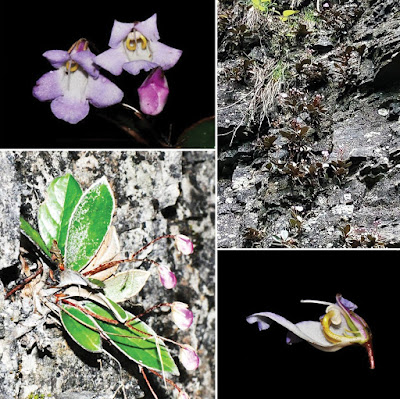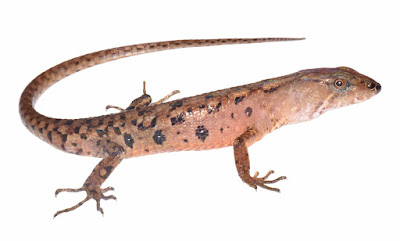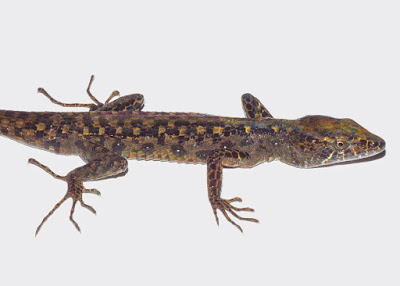[Most Recent Entries] [Calendar View]
Tuesday, July 21st, 2020
| Time | Event | ||||
| 9:37a | [Ornithology • 2020] Taxonomic Evaluation of the Grallaria rufula (Rufous Antpitta) Complex (Passeriformes: Grallariidae) distinguishes Sixteen Species
Abstract Populations in the Rufous Antpitta (Grallaria rufula) complex occupy humid montane forests of the Andes from northern Colombia and adjacent Venezuela to central Bolivia. Their tawny to cinnamon-colored plumages are generally uniform, featuring subtle variation in hue and saturation across this range. In contrast to their conservative plumage, substantial vocal differences occur among geographically isolated or parapatric populations. Working within the framework of a comprehensive molecular phylogeny, we reexamined species limits in the G. rufula complex, basing taxonomic recommendations on diagnostic differences in vocalizations and considering identifiable differences in plumage where pertinent. We identified 16 populations for species designation, including seven populations previously described as subspecies and, remarkably, six new species described herein. Within one of these species, we identified less robust vocal differences between populations that we designate as subspecies. Geographic variation exists within another species, but its critical evaluation requires additional material. Taxonomic revisions of groups consisting of cryptic species, like the Grallaria rufula complex, are imperative for their conservation. Rather than widespread species as currently defined, these complexes can comprise many range-restricted taxa at higher risk of extinction given the continuing human pressures on their habitats. Keywords: Andes, systematics, species limits, Grallariidae, Grallaria rufula, Grallaria blakei, Grallaria rufocinerea, Aves Grallaria saltuensis Wetmore, 1946, subspecies elevated to species Grallaria spatiator Bangs, 1898, subspecies elevated to species Grallaria rufula sensu stricto Lafresnaye, 1843 Grallaria rufocinerea Sclater & Salvin, 1879 Grallaria alvarezi Cuervo, Cadena, Isler, & Chesser, new species Grallaria saturata Domaniewski & Stolzmann, 1918, subspecies resurrected and elevated to species Grallaria cajamarcae (Chapman, 1927), subspecies elevated to species Grallaria blakei Graves, 1987 Grallaria gravesi Isler, Chesser, Robbins & Hosner, new species Grallaria oneilli Chesser & Isler, new species Grallaria obscura Berlepsch & Stolzmann, 1896, subspecies elevated to species Grallaria centralis Hosner, Robbins, Isler, & Chesser, new species Grallaria ayacuchensis Hosner, Robbins, Isler, & Chesser, new species Grallaria occabambae (Chapman, 1923), subspecies elevated to species Grallaria occabambae marcapatensis, Isler & Chesser, new subspecies Grallaria sinaensis Robbins, Isler, Chesser, & Tobias, new species Grallaria cochabambae Bond & Meyer de Schauensee, 1940, subspecies elevated to species Grallaria saltuensis Wetmore, 1946 Perijá Antpitta Etymology. The English name, first proposed by Meyer de Schauensee (1950), reflects the mountain range to which this species is restricted.Grallaria spatiator Bangs, 1898 Sierra Nevada Antpitta Etymology. The English name Sierra Nevada is a shortened name widely used in Colombia for the Sierra Nevada de Santa Marta, to which this species is restricted. The name was also used by Krabbe et al. (2019).Grallaria rufula sensu stricto Lafresnaye, 1843 Muisca Antpitta Etymology. The English name honors the Muisca civilization that occupied the altiplano and slopes of the Eastern Andes. Muisca culture survives in the contemporary Colombian society of this region.Grallaria rufocinerea Sclater & Salvin, 1879 Bicolored Antpitta Grallaria alvarezi Cuervo, Cadena, Isler, & Chesser, new species Chamí Antpitta Etymology. The scientific name honors Colombian ornithologist Mauricio Álvarez Rebolledo, who led several biological expeditions during the peak of political instability of the 1990s and early 2000s in Colombia, while playing an important role in conservation and education. Mauricio pioneered avian sound recording in the country, establishing the Colección de Sonidos Ambientales at Instituto Alexander von Humboldt. The English name honors the “people of the mountains,” the Emberá-Chamí indigenous community inhabiting the slopes of northern Western Andes of Colombia. Chamí means mountain, and Tatamá, the name of the type locality, means “the grandfather of the rivers” in Emberá language. Grallaria saturata Domaniewski & Stolzmann, 1918 Equatorial Antpitta Etymology. The English name reflects the geographic location of the range of this species, which straddles the Equator.Grallaria cajamarcae (Chapman, 1927) Cajamarca Antpitta Etymology. The English name reflects the scientific name and the geographic range of this species, which is primarily confined to Cajamarca, Peru. The name was also used by Krabbe et al. (2019).Grallaria blakei Graves, 1987 Chestnut Antpitta Grallaria gravesi Isler, Chesser, Robbins & Hosner, new species Graves’s Antpitta Etymology. We are pleased to name this species for our friend and colleague Dr. Gary R. Graves, whose ornithological contributions include the field work and subsequent analysis that resulted in the recognition of G. blakei. After describing G. blakei, Gary Graves embarked on a study of the taxonomic issues presented by the G. rufula complex that culminated in this paper, to which he has provided support.Grallaria oneilli Chesser & Isler, new species O’Neill’s Antpitta Etymology. The scientific and English names honor Dr. John P. O’Neill who collected the type specimen. John O’Neill has dedicated his career to the exploration of ornithologically unknown regions in Peru, extending knowledge of poorly known species, discovering new taxa, and training generations of students in the art and science of ornithological field work. Newly described species in this paper reflect the modern renewal of ornithological collecting in the Andes, of which John O’Neill was a pioneer.Junín Antpitta Etymology. The English name is adapted from Cory & Hellmayr (1924) and reflects the limited distribution of this species.Grallaria centralis Hosner, Robbins, Isler, & Chesser, new species Oxapampa Antpitta Etymology. The scientific name reflects the range of this species near the geographic center of Peru. The English name reflects the Province of Oxapampa, Pasco, Peru, where initial recordings were made by T. S. Schulenberg (ML 35960, 40063) and specimens (LSUMZ 106081, 170664) were collected by Louisiana State University expeditions in 1982 and 1985.Grallaria ayacuchensis Hosner, Robbins, Isler, & Chesser, new species Ayacucho Antpitta Etymology. The scientific and English names reflect its restricted known distribution on the humid eastern slopes of the Department of Ayacucho, Peru.Urubamba Antpitta Grallaria occabambae marcapatensis, Isler & Chesser, new subspecies Etymology. The subspecific name refers to the Marcapata district, where the type specimen was collected. Grallaria sinaensis Robbins, Isler, Chesser, & Tobias, new species Puno Antpitta Etymology. The scientific name reflects the name of the type locality, and the English name reflects the Peruvian department in which the type locality is located.Grallaria cochabambae Bond & Meyer de Schauensee, 1940 Bolivian Antpitta Etymology. The English name refers to the country to which this species is endemic. The name was also used by Krabbe et al. (2019). Morton L. Isler, R. Terry Chesser, Mark B. Robbins, Andrés M. Cuervo, Carlos Daniel Cadena and Peter A. Hosner. 2020. Taxonomic Evaluation of the Grallaria rufula (Rufous Antpitta) Complex (Aves: Passeriformes: Grallariidae) distinguishes Sixteen Species. Zootaxa. 4817(1); 1-74. DOI: 10.11646/zootaxa.4817.1.1 | ||||
| 11:39a | [Herpetology • 2020] Zhangixalus franki • A New Species of the Genus Zhangixalus (Anura: Rhacophoridae) from Vietnam
Abstract We describe a new species of the genus Zhangixalus Li, Jiang, Ren & Jiang, 2019 from Ha Giang Province, Vietnam based on morphological and molecular data. In the molecular phylogenetic analyses, the new species is nested in the Zhangixalus duboisi (Ohler, Marquis, Swan & Grosjean, 2000) group, where it is sister to Z. duboisi with a genetic distance of 2.51%. The new species, Zhangixalus franki sp. nov., differs from its congeners by a combination of the following morphological characters: size large, SVL 77.9–85.8 mm in males; finger webbing formula I1-1II0-1III½-0IV; dorsal surface of head and body green with dark brown spots; ventral surface grey or dark grey, white stripe along edge of jaw, insertion of limbs, and along lateral ridges of fore and hind limbs and flank, separating upper green part from lower grey part. The new species occurs in evergreen montane tropical forests at an elevation of ca 1300 m a.s.l. The new discovery brings the total number of known species in the genus Zhangixalus to 38 and the species number reported from Vietnam to nine. Keywords: New species; Zhangixalus franki sp. nov.; molecular phylogeny; taxonomy; Vietnam Class Amphibia Gray, 1825 Order Anura Fischer von Waldheim, 1813 Family Rhacophoridae Hoffman, 1932 Genus Zhangixalus Li, Jiang, Ren & Jiang, 2019 Zhangixalus franki sp. nov. Diagnosis The new species can be assigned to the genus Zhangixalus based on the following morphological characters: snout pointed; presence of intercalary cartilage between terminal and penultimate phalanges of digits, distal end of terminal phalanx in Y-shape; tips of digits expanded into large disks, bearing circum-marginal grooves; fingers webbed; presence of supra-cloacal dermal ridge; and pupil horizontal (Jiang et al. 2019). In addition, the new species is unambiguously nested in the genus Zhangixalus by molecular phylogenetic evidence. It is closely related to Z. duboisi and Z. omeimontis and nested in the same clade with Zhangixalus dugritei (David, 1872), the type species of this genus. The new species is distinguished from its congeners by a combination of the following morphological characters: 1) size large (SVL 77.9–85.8 mm for the males); 2) head slightly wider than long; 3) snout pointed; 4) dorsal skin smooth; 5) finger webbing formula I1-1II0-1III½-0IV; 6) dorsal surface of head and body green with dark brown spots; 7) lower jaw region greyish, throat, chest and belly white; 8) white stripe along edge of jaw, insertion of limbs, and along lateral ridges of fore limbs, hind limbs and flank, separating upper green part from lower grey part. Etymology We name this new species in honor of Dr Frank Mutschmann, late amphibian veterinarian and conservationist from Berlin, Germany, in recognition of his support of our amphibian research and conservation projects in Vietnam. As common names we suggest Frank’s Tree Frog (English), Ếch cây frank (Vietnamese) and Franks Ruderfrosch (German). Distribution Zhangixalus franki sp. nov. is currently known only from the type locality in Ha Giang Province, northern Vietnam (Fig. 3). The species was recorded at elevations between 1320 and 1360 m a.s.l. Natural history Specimens of the new species were collected from 19:00 to 24:00 on trees, close to small ponds in undisturbed evergreen forest (Fig. 4). Other tree frogs that were found at the same site were Polypedates sp. (of the P. leucomystax species complex), Z. duboisi and Kurixalus sp. Females, larval stages and eggs of the new species are unknown.
Hoa Thi Ninh, Tao Thien Nguyen, Nikolai Orlov, Truong Quang Nguyen and Thomas Ziegler. 2020. A New Species of the Genus Zhangixalus (Amphibia: Rhacophoridae) from Vietnam. European Journal of Taxonomy. 688; 1-18. DOI: 10.5852/ejt.2020.688 | ||||
| 3:22p | [Botany • 2020] Paraboea dolomitica (Gesneriaceae) • A New Species from Guizhou, China
Abstract Here we describe Paraboea dolomitica Z.Y. Li, X.G. Xiang & Z.Y. Guo, a new species of Gesneriaceae from Guizhou, China. Based on recent extensive observations, this new species is morphologically similar to Paraboea filipes (Hance) Burtt, in having obovate leaf blades, 1–4-flowered cymes and purplish corolla, but differs from that species by the combination of denticulate leathery leaves, sparsely brown haired peduncles, two woolly bracts, reniform anthers and two glabrous staminodes. Additionally, molecular data support this new species as a member of a clade that includes P. crassifolia, P. tetrabracteata, P. peltifolia, P. vetutina, P. dushanensis, P. dictyoneura, P xiangguiensis and P. guilinensis, but it is distinct from them in leaf position, inflorescence, penduncle, bract and capsule. The conservation status of this species is considered to be “Vulnerable” (VU) according to the IUCN Red List Categories and Criteria. Keywords: Gesneriaceae, limestone flora, new species, Paraboea
Paraboea dolomitica Z.Y. Li, X.G. Xiang & Z.Y. Guo, sp. nov. Diagnosis :Paraboea dolomitica is morphologically similar to P. filipes. Both of them have obovate leaf blades, 1–4-flowered cymes and a purplish corolla, but P. dolomitica differs from P. filipes by its leathery leaves with denticulate margins (vs. papery leaves with subentire margins in P. filipes), peduncles sparsely covered with brown hairs (vs. sparsely sericeous-lanate when young and glabrate when mature), two woolly bracts (vs. two glabrous bracts), reniform anthers (vs. oblong anthers), two staminodes 0.3 cm long (vs. 1 staminodes 0.02 cm long), and flowering during April and May (vs. flowering during September and October) (Table 1). Distribution: Paraboea dolomitica is known from Yuntai Mountain, Shibing County and Wuyang River, Zhenyuan County, Guizhou, China. Etymology: The specific epithet refers to the habitat of this new species, the dolomite karst area. Habitat and ecology: Paraboea dolomitica grows on rock faces of dolomite karst area, at an elevation of ca. 650–855 m. Accompanying plants in the habitat are sparse and include trees, such as Platycarya strobilacea Sieb. et Zucc., Cotinus coggygria Scop., and herbs such as Selaginella moellendorfii Hieron., Paphiopedilum micranthum T. Tang et F. T. Wang, Viola diffusa Ging., Galium aparine Linn. var. echinospermum (Wallr.) Cuf. and Carex sp. Zhiyou Guo, Zhaowen Wu, Weibin Xu, Zhenyu Li and Xiaoguo Xiang. 2020. Paraboea dolomitica (Gesneriaceae), A New Species from Guizhou, China. PhytoKeys. 153: 37-48. DOI: 10.3897/phytokeys.153.50933 | ||||
| 3:25p | [Herpetology • 2020] Magdalenasaura adercum & M. leurosquama • Filling the Gaps in A Highly Diverse Neotropical Lizard Lineage: A New and Endemic Genus of Cercosaurinae (Squamata: Gymnophthalmidae) with the Description of Two New Species from the Northe Abstract In the last decade, understanding of the Neotropical lizards family Gymnophthalmidae has changed dramatically with the recognition of several new genera, resolution of non-monophyly, definition of previously unknown lineages and refined biogeographic hypotheses. Recent field explorations on the northern Cordillera Central in Colombia uncovered two undescribed species that cannot be assigned to any currently recognized gymnophthalmid genus. Based on a molecular phylogenetic analysis combined with morphological and genetic distances, we describe a new genus and two new species from the northern Andes of Colombia. Magdalenasaura gen. nov. is restricted to the Magdalena biogeographic province and is sister to the cis-Andean genus Gelanesaurus. The new genus can be readily distinguished from all other Cercosaurinae genera by a combination of genetic and morphological characters. The new genus contains Magdalenasaura leurosquama sp. nov. and M. adercum sp. nov., both found in forested habitats near streams at altitudes ranging from 1300 to 1850 m on the eastern flank of the northern Cordillera Central in Colombia. We differentiate the Cercosaurinae genera from Colombia based on general scutellation. Filling the gaps of the tremendous diversity of gymnophthalmid lizards will improve taxonomic and biogeographic hypotheses to better understand the evolution of endemic lineages from the north-western corner of South America. Keywords: Cordillera Central, Magdalena biogeographic province, molecular phylogenetics, morphology, reptiles, South America, systematics
Magdalenasaura gen. nov. Type species. Magdalenasaura leurosquama sp. nov. Etymology. Magdalenasaura (gender feminine) derives from the Spanish word Magdalena and the Greek word saura (lizard), in allusion to the Magdalena river basin where the two species have been found. Magdalenasaura adercum sp. nov. Etymology. The epithet adercum derives from the Greek word aderkes (unseen or unexpected), because after extensive sampling efforts in the region these lizards seem to be very rare, secretive and hard to see. Magdalenasaura leurosquama sp. nov. Etymology. The epithet leurosquama derives from the Greek word leuros (smooth), and the Latin word squama (scale), in allusion to the smooth dorsal scales of this species. José M. Fang, Juan D. Vásquez-Restrepo and Juan M. Daza. 2020. Filling the Gaps in A Highly Diverse Neotropical Lizard Lineage: A New and Endemic Genus of Cercosaurinae (Squamata: Gymnophthalmidae) with the Description of Two New Species from the Northern Andes of Colombia. Systematics and Biodiversity. DOI: 10.1080/14772000.2020.1783714 Descubren el primer género de reptiles endémico de Colombia |
| << Previous Day |
2020/07/21 [Calendar] |
Next Day >> |























